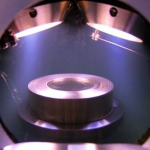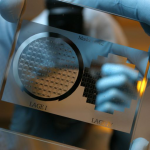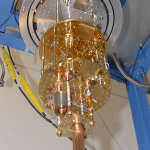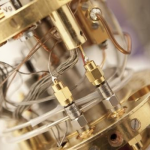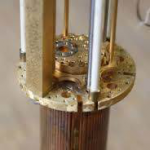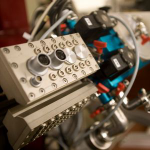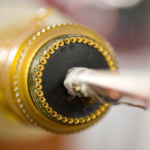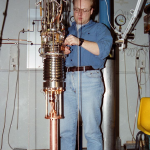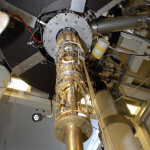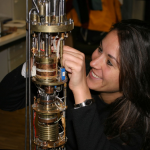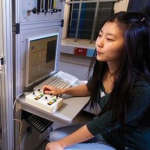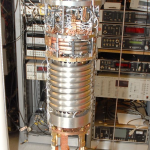

- Photon Transport in a Bose-Hubbard Chain of Superconducting Artificial Atoms
G. P. Fedorov et al., Phys. Rev. Lett. 126, 180503 (2021) - Path-Dependent Supercooling of the
He3 Superfluid A-B Transition
Dmytro Lotnyk et al., Phys. Rev. Lett. 126, 215301 (2021) - Superconductivity in an extreme strange metal
D. H. Nguyen et al., Nat Commun 12, 4341 (2021) - High-Q Silicon Nitride Drum Resonators Strongly Coupled to Gates
Xin Zhou et al., Nano Lett. 21, 5738-5744 (2021) - Measurement of the 229Th isomer energy with a magnetic micro-calorimeter
T. Sikorsky et al., Phys. Rev. Lett. 125 (2020) 142503
maXs: Microcalorimeter Arrays for High-Resolution X-Ray Spectroscopy at GSI/FAIR
C. Pies, S. Schäfer, S. Heuser, S. Kempf, A. Pabinger, J.-P. Porst, P. Ranitsch, N. Foerster, D. Hengstler, A. Kampkötter, T. Wolf, L. Gastaldo, A. Fleischmann, C. EnssHighly-charged heavy ions like U91+ provide unique conditions for the investigation of relativistic and quantum electrodynamical effects in strong electromagnetic fields. We present two X-ray detectors developed for high-resolution spectroscopy on highly-charged heavy ions. Both detectors consist of metallic magnetic calorimeters (MMCs) forming linear eight-pixel arrays. The first detector, maXs-20, is developed for the detection of X-rays up to 20 keV with an energy resolution below 3 eV. The second device, maXs-200, is designed for X-ray energies up to 200 keV with an energy resolution of 40 eV. The results of characterization measurements of single detectors of both arrays will be shown and discussed. In both cases, the performance of the detectors agrees well with their design values. Furthermore, we present a prototype MMC for soft X-rays with improved magnetic flux coupling. In first characterization measurements the energy resolution of this device was 2.0 eV (FWHM) for X-rays up to 6 keV.
J. Low Temp. Phys. 167, 269 (2012)
doi: 10.1007/s10909-012-0557-z
